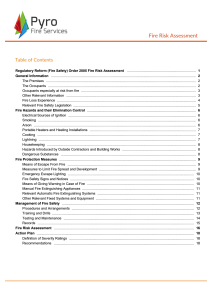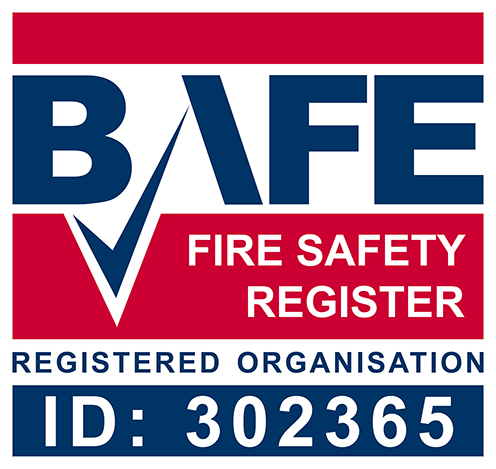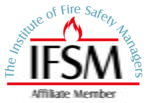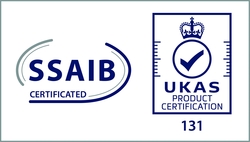A fire risk assessment is a crucial and cautious look at your premises and the people who use them from a fire prevention perspective. They are a legal requirement under The Regulatory Reform Order 2005. It should be carried out by organisations of all types and sizes to ensure the maximum safety of employees and visitors. The assessment identifies and examines potential fire hazards and their associated risks. This enables organisations to take the necessary precautions to prevent fires from occurring and, in the event of a fire, minimise the impacts.
A fire risk assessment is required for all commercial premises and residential premises with 2 or more domestic dwellings such as blocks of flats and HMOs.
The following are the five components of a fire risk assessment that must be considered.
1. Identifying Fire Hazards
This first step is to identify any potential fire hazards in the workplace. Ask yourself, how could a fire start and what could burn?
Fire starts when a source of ignition comes into contact with fuel and oxygen. So, with that in mind, a good way to mitigate fire hazards is to keep sources of ignition and fuel apart.
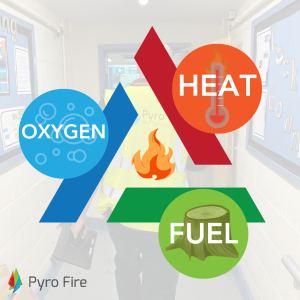
How could a fire start?
One of the first things to consider in this stage of the fire risk assessment is how or where a fire could start. Assess sources of heat such as electrical equipment, cooking equipment, smoking areas, heaters, and naked flames from things items such as a candle.
What could burn?
Then examine the inside and outside of the premises and identify what could burn (sources of fuel). Some examples of this include:
• Combustible materials
• Flammable liquids
• Packaging
• Furniture
• Rubbish
Anything found that could start a fire or that could burn in the event of a fire should be taken note of, and then step 1 is complete.
2. Identifying People at Risk
The next step is to identify who is at risk in the event of a fire. This includes employees, visitors and anyone else who will be in or around the premises.
Once the people at risk have been identified, the assessor should then carefully consider the level of risk these people are at. Take into consideration things such as:
• Their ability to evacuate the building
• Mobility issues and disabilities
• Working hours
• Age
• Familiarity with the premises
• Special requirements
Make a note of the people at risk and the people who are especially at risk and then step 2 is complete.
3. Evaluate, Remove or Reduce the Risks
Once the fire hazards and people at risk have been identified, this information is then utilised to evaluate the risks associated with each hazard. This stage focuses on finding ways to avoid accidental fires and examining ways to minimise the current fire risk.
Firstly, assess the risks found in steps 1 and 2. What is the likelihood of a fire occurring? What are the potential consequences if a fire was to occur? How effective are the existing control measures?
From there, it is time to remove and reduce any fire risks, for example:
• Keeping sources of heat/sparks apart
• Inspecting the layout of the building
• Finding out what materials have been used in construction. For instance, do the ceilings or walls have chipboard, hardboard or polystyrene?
• Looking at existing fire protection systems
• Decide who oversees the evacuation procedure
• Determine if there are ways to put out small fires quickly to stop them from spreading
• Removing or securing any fuel that an arsonist may use
These are just a handful of examples that should be considered and acted upon in this stage of the fire risk assessment. Once this step is completed, the next step is to prepare.
4. Record Your Findings, Prepare an Emergency Plan and Provide Training
This stage is about implementing control measures in response to the evaluation of risks. The three parts of this step are record, plan and train.
Record
Keep a record of the fire hazards that have been identified and what has been done to remove or reduce the risks associated with them. A fire risk assessment record is a sensible option for all businesses to have but businesses must have one if they are a business larger than 4 people or have a license.
Plan
Businesses must have a clear plan of how they are preventing fire and how they will protect people if a fire were to unfortunately happen. If a building is shared, all parties sharing the building should coordinate their plans.
This plan should be communicated to everyone so that all are well-informed and clear on what to do in case of a fire.
Train
All staff should be trained to know what to do in the event of a fire. A popular example of how to do this is through fire drills. This training should also be provided to temporary staff.
5. Review and Update the Fire Risk Assessment Regularly
Finally, the produced fire risk assessment should be kept under regular review and updated when necessary. Changes should be communicated with the relevant people and where appropriate, re-training may be needed.
Looking for a Fire Risk Assessment?
We are third-party accredited to provide fire risk assessment, as a BAFE SP205 Certificated Organisation.
Our Fire Risk Assessments eliminate the jargon by providing a prioritised and easy-to-understand action plan. We operate throughout the UK helping companies meet fire safety compliance whilst keeping costs to a minimum.
For more information and a quick quote, please visit our Fire Risk Assessment page.
Not sure where to start?
Speak to our teamKey accreditations
We’re on a mission to mitigate risk by pioneering new standards in competence and technology to protect more buildings and people. Maintaining our key accreditations are just one of the ways we do this.

